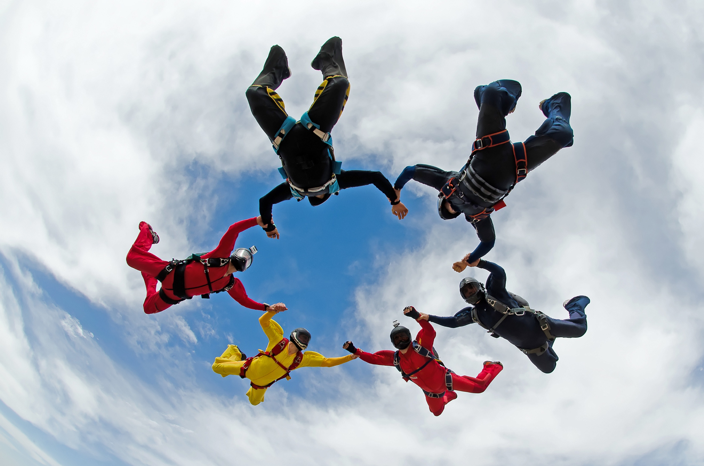Are you a fan of Extreme Sports? What drives you to participate? There are many different factors you should consider when deciding on which sport to pursue. Some of these factors include Thrill seeking, High risk, Competitive nature, and Teamwork. If you have all of these characteristics, you may want to explore this exciting sport! If you are not sure which one is right for you, read on! Below, you’ll find four common traits of individuals who participate in Extreme Sports.
Thrill seeking
The psychology of thrill seeking and its relation to physical risk has practical and theoretical implications. People who have high levels of thrill seeking tend to seek extreme experiences, despite the risks involved. Recent trends in extreme products and activities have emerged in response to this collective interest in sensation seeking. As the interest in extreme activities grows, they spread rapidly among high-sensation-seeking individuals, who then enthusiastically share their experiences on social media.
Thrill seekers often turn to air-bound activities for a rush. Air-bound activities range from full-on action to slower-paced spectacles. Hot air ballooning, for example, is a popular activity in many parts of the world, and festivals of hot-air ballooning attract onlookers to enjoy the spectacular views. Although the thrill of airborne adventures can be intense, these activities also have a relaxing aspect.
High risk
Although these extreme sports involve risks, they are an attractive way to promote a sense of community. This sense of brotherhood or community is often enhanced through the shared flow and challenges of high-risk activities. Participants of high-risk extreme sports may become dependent on each other, resulting in a strong social bond. Some people even describe these activities as a way to fulfill a death wish. However, not everyone can participate in these activities.
A recent study compared the motives of adolescents and adults who engage in high-risk sports. Both groups engaged in freeriding, a form of skiing that is often performed outside of a ski resort’s protected area. The participants completed questionnaires on the motivation for engaging in freeriding using content analysis using MAXQDA software. The participants reported that they participated in these extreme sports for several reasons. The participants also reported feeling a sense of pleasure, challenge, and balance, although their descriptions of friends differed between the two groups.
Competitive nature
Extreme sports have become more popular in the past three years, but little research has been done on these activities. One study looked into the competitive nature of the activities and its impact on the participants and their families. Researchers studied the life of Allen, a 48-year-old married father of three teenagers. He felt trapped by his social and work life, and pursued freedom through extreme sports. Allen passed away from severe injuries sustained during base-jumping.
A common misconception about extreme sports is that they are unoriginal. Indeed, some of the most dangerous activities are often the most creative and unregulated. This has led to some criticisms of these sports. Yet, there are other perspectives on the competitive nature of extreme sports. They can be characterized as relational activities that provide opportunities for existential reflection and self-actualization. But there are also many positive aspects to competitive extreme sports, including the uniqueness of the activity.
Teamwork
In extreme sports, teamwork is a key component of achieving a successful outcome. Teamwork is the combined action of a group of people to reach a common goal. It is especially effective when handled well. Here are some tips for ensuring your team works well together. Follow these strategies and you’ll be well on your way to achieving great results. Listed below are some tips to improve teamwork in extreme sports.
Encourage your players to work together: Good teamwork fosters empathy, improved self-esteem, and improved coping skills. Effective teamwork also promotes faster recovery after injury and helps develop problem-solving skills. Many popular gyms foster healthy competition. Encourage teamwork in such environments to foster healthy competition and improve athletes’ emotional intelligence. Teamwork promotes healthy competition, while providing a safe environment that supports individual growth and development. Teamwork also helps athletes understand how harmful egoistic behavior can be to their performance.
Uncontrollable variables
An increasing number of extreme sports involve more uncontrollable variables, such as weather conditions and terrain. Because these sports often involve competition, they are not governed as much as other sports. As a result, these risks are higher than with traditional sports. Listed below are some reasons why extreme sports are riskier. They also present unique challenges that many athletes don’t see coming. If you’re considering taking up an extreme sport, check with your coach for recommendations.
First, it’s important to know what makes someone engage in extreme sports. While the adrenaline rush is a huge motivator, it’s not the only factor. A participant’s age is an important consideration. However, extreme sports are also hazardous to their physical and mental health. Because these activities are so extreme, many experts believe they’re dangerous. Besides the risk of serious injury, the risk of death is also higher than with more traditional sports.



